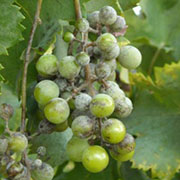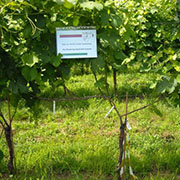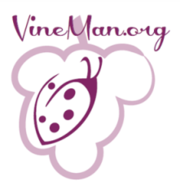VineMan.org



More about the project
Main results and conclusions
First activity of the project was the organization of the “Kick-off meeting” in Italy (Piacenza, 24.01.2012) where all partners met and the plan for the project activities was discussed and agreed. Shortly after, the Consortium Agreement was prepared and signed by all participants. Representative persons of organic farmer associations, European retailers, and consumer’s associations were contacted by the coordinator (under suggestion of the partners) for their availability to constitute an external “Advisory Board” for the project.
Three experts accepted the role: a representative person of Italian organic farmer association, a representative person of Italian local wine association, and an adviser at the Austrian Chamber of Agriculture and representative person of Austrian organic farmer association. The project materials were provided to the “Advisory Board” to obtain comment and suggestions; experts were invited to the “Intermediate meeting” in Slovenia and to the final congress in Vienna.
Different dissemination actions were performed within the four indicated “pillars”. In particular, the project website was developed (www.vineman-org.eu) and two leaflets were prepared and translated in the partners languages, explaining respectively the objectives and content of the project, and the main project results and recommendations to stakeholders.
The objectives and the results of the projects were presented in different occasions:
- to students (teaching)
- to the scientific community, with different presentation in conferences and through peer-reviewed articles
- to stakeholders, during several workshops organized in different countries and through articles published in professional magazines
- to the “big audience”, through articles in local newspapers.
Finally a very successful final congress was organized in Vienna (AGES) and it was attended by around 150 stakeholders.
Fulfillment of objectives
The activities foreseen were all successfully performed, thanks to the professional work of each partner and the fruitful collaboration within partners. The dissemination activities performed, in particular the workshops with stakeholders and the final meeting, gave a good feedback on the activities performed during the project.
The different activities performed within WP2 to WP7 were summarized in the following recommendation to end-users:
- potential use of resistance enhancing compounds in case of low disease pressure (downy mildew);
- perform leaf removal at pre flowering stage on varieties with very compact clusters for reduced bunch rot sensitivity and increased grape quality;
- use epidemiological models to better schedule treatments against downy and powdery mildew; and iv) combination with sulphur may increase efficacy of Serenade.
WP8 objectives were achieved although the applied methods could not show that the different management strategies had a significant effect on the fungal species profiles. In fact, very interesting fungal species were detected and the retrieved culture collection represents an important resource for future studies
VineMan.org
 9 partners, 5 countries
9 partners, 5 countries
Coordinator
Associated Professor Vittorio Rossi, Università Cattolica del Sacro Cuore, Italy
Partners
Director Paolo Storchi, CRA – Agricultural Research Council, Italy
Head of Department Helga Reisenzein, Institute of Plant Health, Austria
Head of Department Hanns-Heinz Kassemeyer, Staatliches Weinbauinstitut, Germany
Associate Professor Javier Tardaguila, University of La Rioja, Spain
Professor Emilio Montesinos, University of Girona, Spain
PhD Hans-Josef Schroers, Agricultural Institute of Slovenia, Slovenia
Dr. Franz G. Rosner, Education and research centre for enology and pomology, Austria
Professor Joseph Strauss, University of Natural Resources and Life Sciences, Austria
Project stakeholders
In Europe, most of the countries registered growths between 5 and 15% annually in the consumption of organic wine. More and more growers are interested to the organic viticulture and consequently more and more stakeholders and end-users.
Canada has the best potential market for organic wine (consumption grew of around 20% in recent years); USA (sales of organic wine reach about 26 billion dollars a year) and Brazil also shows constant growth figures.
